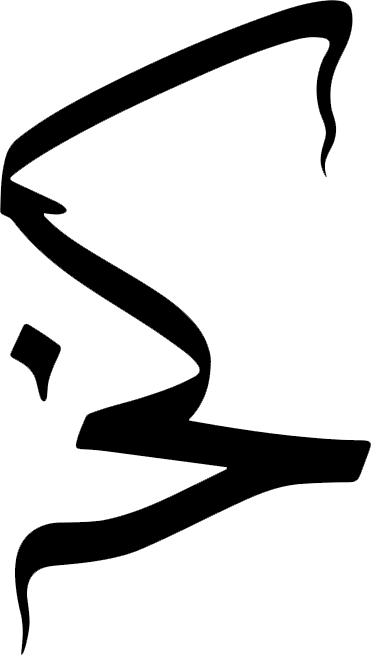
issue 1. Disorient
Cover art by Paloma Martinez-Miranda
editor's note
Where did you last see your face? Now, especially, the representation of marginalized groups in media is in crisis. Shepard Fairey’s famous portrait of Munira Ahmed, a hijabi woman draped in the American flag, for one, has become a monolithic depiction of an already essentialized people. But not all Muslim or Middle Eastern women wear hijabs, of course. And not all Middle Easterners and North Africans are Muslims or Arabs. We are Coptic, Tuareg, Kurdish, Yazidi, Syriac, Christian, Turkish, Sufi, Maghrebi, Armenian, Zoroastrian, Persian, Aramean, Druze, Berber, Jewish, atheist, and so much more.
Back home, geopolitical shifts circle back to uncertainty. What will become of Yemen? Will the Syrian conflict ever end? How will Iraq be rebuilt? Will Saudi Arabia and Iran finally butt heads? What of Turkish expansionism, or Egyptian and Tunisian political Salafism? Facing unstable futures, dynasties and their opportunists take up space before we have time to organize. The rate of change renders many of us complacent, unwilling to look into the eye of the storm.
To reduce complexity, humans create categories. It’s what we do to make our experiences seem more stable. It’s how our leaders legitimize their ambitions. Yet we know that current labels are profoundly ineffective. Sunni versus Shiite, Islamic versus secular, fries inside versus outside your shawarma... On the ground, these categories naturally start to break down.
Our Summer issue, DISORIENT, encourages the expression of regional identities on their own terms. The region isn’t an indistinguishable morass of warring tribes, Islam, oil-rich sheikhs, and sword-wielding militants on horseback—it’s Egyptian working class pop music, Yemeni conflict mediating poets, wry academics, Muslim feminists, and radical artists. Regional art isn’t just geometric patterns—it’s street signs signaling sadness, hijabis draped in the jungle, women without hijabs, Iranian fashionistas, Ottoman icons and Jack Daniels, burnt matches.
For Khabar Keslan, to DISORIENT is to actively break categories down—to try our best to capture the infinity of experience in the region. It’s an act of harnessing instability’s power, an acceptance that the quest for understanding is never over. Discomfort and confusion, rather than obstacles, are sources of wisdom. DISORIENT is the antidote to the crisis of representation—when individuals, in all of their incoherence, can represent themselves.
DISORIENT is a movement, a long tradition to which this issue pays homage. Current publications such as Ajam Media Collective, Bidoun, Mada Masr, Mashallah News, Muftah, MyKali, Raseef 22, and Reorient: we thank you, for we can only exist because of the work you’ve done.
Now, please, sit back, relax, and make yourself uncomfortable.
Featuring
Almost Home
By Amir H. Fallah
"It's Crowded and there is no mercy!"
By Mariam Elba
Sadness St.
By Mohamed Khalid
Saqf
By Farrah Fray & Ahmed Drebika
Rotating chair
By Sultan Al Rahami
Poetic Justice?
By Rachel Furlow
Dear Deerah
By Shoug Sagur
Tehran Streetstyle
By Hoda Katebi
Aqaba
By Hamza Bilbeisi
Wildflowers
By Dilan Arslan
Legends and Heroes
By Zaina El Said
In search of a passport
By Ceem Haidar
A Foreign Child to the Market
By Marwa Fichera
Tales from Life
By Ayham Jabr
A Love letter to Mosul
By Yousif Kalian
Profile
By Rama Duwaji
Ink
By Sara Aladayleh
When We Wonder
By Fatima Alsuwaidi
Dual Transcendence
By Yasmine Rukia
My Most Precious
By Bayan Abdullateef
Unseeing Eye
By Nour Hifaoui Fakhoury
Mish Min El Marikh
By Rawand Issa
Only Art Will Save Us
By Omar Alhashani & Dayna Ash
Boobies
By Sofia Elian
No One Will Read This
By Zachary J. Foster

